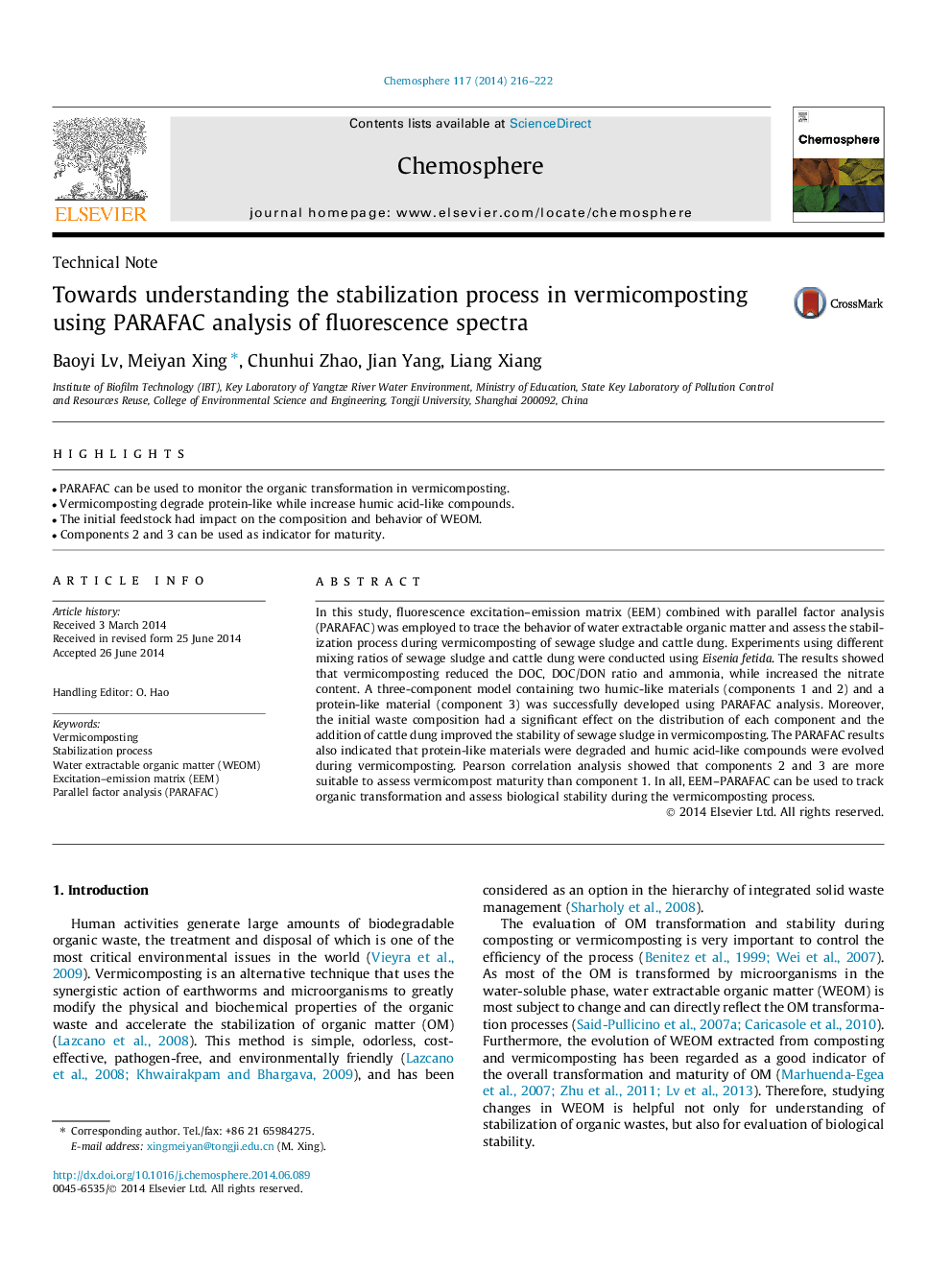| کد مقاله | کد نشریه | سال انتشار | مقاله انگلیسی | نسخه تمام متن |
|---|---|---|---|---|
| 6308618 | 1618854 | 2014 | 7 صفحه PDF | دانلود رایگان |
عنوان انگلیسی مقاله ISI
Towards understanding the stabilization process in vermicomposting using PARAFAC analysis of fluorescence spectra
ترجمه فارسی عنوان
برای درک فرآیند ثبات در ورمی کمپوستینگ با استفاده از تجزیه و تحلیل پارافاک از طیف فلورسانس
دانلود مقاله + سفارش ترجمه
دانلود مقاله ISI انگلیسی
رایگان برای ایرانیان
کلمات کلیدی
موضوعات مرتبط
علوم زیستی و بیوفناوری
علوم محیط زیست
شیمی زیست محیطی
چکیده انگلیسی
In this study, fluorescence excitation-emission matrix (EEM) combined with parallel factor analysis (PARAFAC) was employed to trace the behavior of water extractable organic matter and assess the stabilization process during vermicomposting of sewage sludge and cattle dung. Experiments using different mixing ratios of sewage sludge and cattle dung were conducted using Eisenia fetida. The results showed that vermicomposting reduced the DOC, DOC/DON ratio and ammonia, while increased the nitrate content. A three-component model containing two humic-like materials (components 1 and 2) and a protein-like material (component 3) was successfully developed using PARAFAC analysis. Moreover, the initial waste composition had a significant effect on the distribution of each component and the addition of cattle dung improved the stability of sewage sludge in vermicomposting. The PARAFAC results also indicated that protein-like materials were degraded and humic acid-like compounds were evolved during vermicomposting. Pearson correlation analysis showed that components 2 and 3 are more suitable to assess vermicompost maturity than component 1. In all, EEM-PARAFAC can be used to track organic transformation and assess biological stability during the vermicomposting process.
ناشر
Database: Elsevier - ScienceDirect (ساینس دایرکت)
Journal: Chemosphere - Volume 117, December 2014, Pages 216-222
Journal: Chemosphere - Volume 117, December 2014, Pages 216-222
نویسندگان
Baoyi Lv, Meiyan Xing, Chunhui Zhao, Jian Yang, Liang Xiang,
